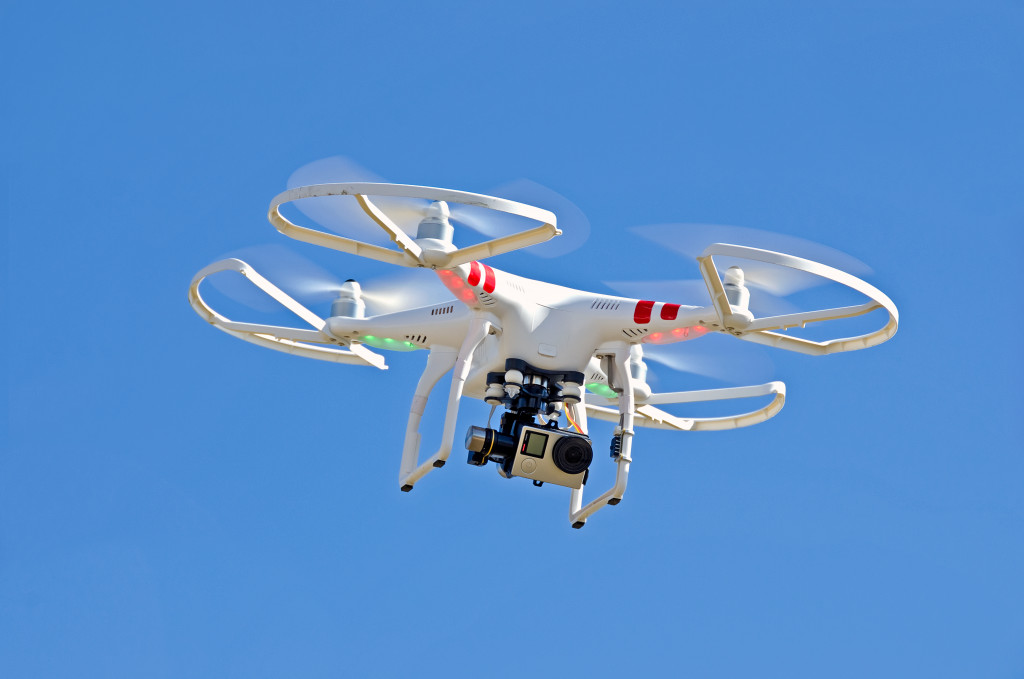- Canon’s FVV system for basketball offers viewers an immersive 360-degree view of live action, revolutionizing the way sports are watched.
- Radar guns for baseball measure the velocity of a pitch, providing real-time data to optimize performance.
- Drone cameras provide sweeping birds-eye views and dynamic shots not achievable using traditional filming equipment.
- NFTs use blockchain technology to ensure each token is unique, allowing organizations to capture fan loyalty.
Sports have always been a part of human culture; over time, technology has become an integral part of the sports industry. From tracking athletes’ performance to providing them with real-time feedback on their technique, technology can help athletes improve their game and reach new heights of success.
These technologies are revolutionizing the way you watch and play sports by allowing you unprecedented access to data about your favorite teams or players, as well as making it easier for coaches to track progress and give feedback. This article will explore some of the most cutting-edge technologies used in sports.
Canon’s Free Viewpoint Video (FVV) System for Basketball
Canon’s Free Viewpoint Video (FVV) System is an innovative technology recently used in basketball. It consists of several cameras synced together to capture the same image from various angles and depths, resulting in an almost three-dimensional video.
This system is being utilized by coaches and players to gain an increased understanding of the nuances of gameplay, identify tactical opportunities, and improve decision-making capabilities with more detailed analysis.
Canon’s FVV promises to revolutionize the way sports are watched, as audiences will soon get an immersive 360-degree view of live action while consuming content remotely. Furthermore, this technological breakthrough is set to expand beyond basketball into other sports, allowing viewers to go even deeper into their favorite sports like never before.
Radar Guns for Baseball

The latest technology introduced to the world of sports is radar guns for baseball. This powerful tool measures the velocity of a pitch, providing real-time data to coaches and players so they can optimize performance.
The significance this has on baseball is undeniable; pitchers can work with coaches to hone their skills to become more effective, increasing the overall enjoyment of both fans and players.
With this new feature, statistics such as pitch speed and strike percentage can be accurately tracked, allowing for deep analysis and aiding in identifying strengths and weaknesses in all aspects of play. Beyond strengthening the physical capabilities of teams, it also gives them a tactical advantage when strategizing against their opponents.
Other technologies
Here are some other technological advancements used in sports:
Drone Cameras

Drone cameras are a game changer for sports filming. Leveraging the limitless possibilities of drone technology, these remote-controlled unmanned aerial vehicles with camera attachments allow for sweeping birds-eye views and dynamic shots not achievable using traditional filming equipment.
These are quickly becoming essential in sports production: broadcasters rely on the never-before-seen angles and images the drones offer to capture events’ spirit and excitement. At the same time, coaches use drones to inspect athletes’ performances from different perspectives, allowing deeper analysis. This technology not only helps add an element of awe to sports broadcasts but also plays a pivotal role in improving athletes’ training methods.
NFTs and Blockchain
Non-fungible tokens, commonly abbreviated as NFTs, have been rapidly gaining popularity in recent months. These digital assets use blockchain technology to ensure that each token is unique and immutable, enabling buyers to prove genuine ownership of digital collectibles such as artwork, videos, and music files.
With the rise of this new technology, sports organizations have been quick to recognize the potential for using NFTs to capture fan loyalty. By issuing their own tokens that represent access to exclusive merchandise or experiences where fans can interact with professional athletes, these organizations can create an exciting new way to interact with their most enthusiastic fans and supporters.
In addition, NFTs are able to provide an effective solution for verifying the authenticity of memorabilia. Using the tamper-proof nature of blockchain technology, it is possible to easily trace a piece’s authenticity back to its origin and even prevent counterfeiting.
Digital Ticketing System
With each passing decade, the world of sports has evolved significantly, and the implementation of emerging technological innovations has taken it to an entirely different level. One such technology is the highly advanced digital ticketing system that is widely being adopted in various sports events.
It is a digitized system for verifying, selling, and managing tickets for sports events. This system enables teams, venues, and ticket vendors to track entry and exits along with ticket reservations by using cutting-edge biometric technology like facial recognition.
Moreover, it makes it easier for spectators to buy tickets in advance without waiting outside the stadium or arena due to paperless tickets using near-field communications. Thanks to digital ticketing systems, fans now have more control over their experience than ever before. Most importantly it seriously reduces fraud which is common in physical ticketing infrastructure.
3D Printing Technology
3D printing technology is revolutionizing the way sports are played and approached. 3D printing, the process of laying down layer upon layer of a chosen material to create a 3-dimensional object, has become widely popular in recent years due to its ability to produce complex objects with optimized geometry, allowing greater precision and functionality.
Sports have been quick to take advantage of this modern technology; 3D printing can be used to design manufactured parts for equipment such as helmets or protective gear, create lightweight shoes that offer superior performance and comfort, or even print materials on-demand or custom-made components like fitness tracking sensors. The range of applications is virtually limitless.
These are just some of the most advanced technologies being used in sports. From increasing the levels of safety and performance to providing an immersive experience for viewers, technology has helped shape our understanding of sports and pushed its boundaries further than anyone could have expected.
